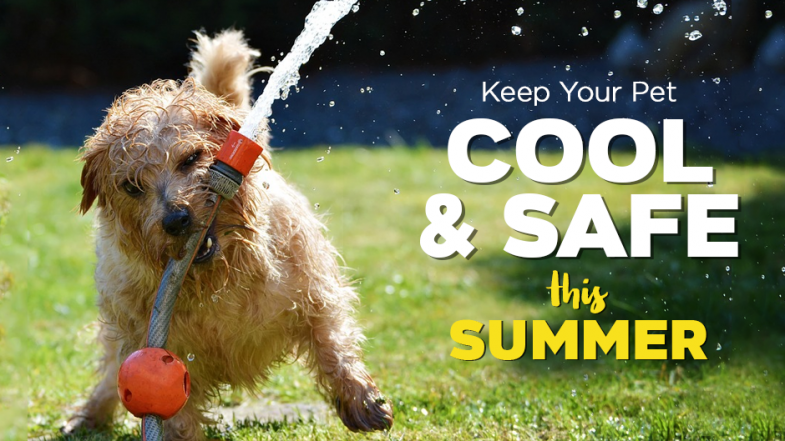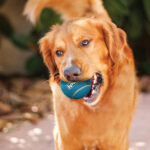
Golden Retrievers are one of the most beloved dog breeds, known for their friendly temperament and boundless energy. However, their high energy levels and thick coats can make them particularly susceptible to heatstroke. This guide will help you understand the signs of heatstroke in Golden Retrievers, and how to prevent and manage this serious condition.
Understanding Heatstroke
Heatstroke is a condition that occurs when a dog’s body temperature rises to dangerous levels, typically above 104 degrees Fahrenheit. This can happen when dogs are exposed to high temperatures for prolonged periods or engage in strenuous activity without adequate hydration and cooling.
Common Symptoms of Heatstroke in Golden Retrievers
Recognizing the signs of heatstroke early can be the difference between life and death for your furry friend. Here are the common symptoms to watch out for:
- Excessive Panting or Difficulty Breathing: Overheating causes dogs to pant excessively as they try to cool down.
- Increased Heart Rate: A rapid pulse can indicate that your dog’s body is in distress.
- Drooling and Salivating: Excessive salivation is a sign that your dog is trying to regulate its body temperature.
- Weakness or Collapse: If your dog appears weak or collapses, immediate action is required.
- Seizures: Heatstroke can lead to neurological issues, including seizures.
- Vomiting or Diarrhea: Gastrointestinal distress is a common symptom of severe heatstroke.
- Bright Red or Blue Gums and Tongue: Abnormal gum color indicates oxygen deprivation or poor circulation.
- Confusion or Disorientation: Your dog may seem confused or have difficulty standing or walking.
Tips for Preventing Heatstroke
Preventing heatstroke involves proactive measures to ensure that your Golden Retriever remains cool and comfortable, particularly during the warmer months.
1. Keep Your Dog Hydrated
Always ensure that your Golden Retriever has access to fresh, clean water. During hot weather, place multiple water bowls around your home and yard. Consider adding ice cubes to the water to keep it cool for longer periods.
2. Avoid Vigorous Exercise During Peak Heat
Schedule walks and playtime during the early morning or late evening when temperatures are cooler. Avoid rigorous activities during the hottest parts of the day to reduce the risk of overheating.
3. Provide Access to Shade
Whether indoors or outdoors, make sure your dog has access to cool, shaded areas. Trees, umbrellas, and shade sails can provide relief from the sun’s harsh rays. Indoors, use fans or air conditioning to keep the environment comfortable.
4. Never Leave Your Dog in a Parked Car
Even with the windows cracked, the temperature inside a parked car can quickly rise to dangerous levels. Never leave your Golden Retriever unattended in a vehicle, even for a short period.
5. Use Cooling Products
Consider using cooling mats, vests, or bandanas designed to help regulate your dog’s body temperature. These products can provide additional relief on particularly hot days.
6. Be Attentive to the Signs of Heatstroke
Always be vigilant and responsive to any signs of heatstroke. Early detection and intervention are crucial in preventing severe consequences.
Immediate Actions if Your Dog Shows Signs of Heatstroke
If you suspect your Golden Retriever is experiencing heatstroke, take immediate action to cool them down and contact your veterinarian. Here are the steps you should follow:
- Move to a Cool Area:
- Immediately relocate your dog to a shaded, cool area. Indoor spaces with air conditioning are ideal.
- Offer Water:
- Offer small amounts of water or ice cubes. Avoid letting your dog drink too much at once.
- Apply Cool, Wet Towels:
- Place cool, wet towels on your dog’s body, focusing on the head, neck, and groin areas. Replace the towels frequently to ensure they remain cool.
- Use a Fan:
- Create air circulation by using a fan. This helps dissipate heat and cool your dog more effectively.
- Avoid Ice Baths:
- Do not use very cold water or ice baths, as rapid cooling can cause shock and other complications.
Conclusion
Heatstroke is a serious condition that requires immediate attention and preventative measures to ensure the well-being of your Golden Retriever. By recognizing the symptoms, taking proactive steps to prevent overheating, and knowing how to respond in an emergency, you can keep your furry companion safe and healthy.
Frequently Asked Questions (FAQs)
1. How can I tell if my Golden Retriever is overheating?
Look for signs such as excessive panting, drooling, increased heart rate, weakness, confusion, vomiting, or abnormal gum color. These symptoms indicate that your dog may be in distress.
2. Are certain Golden Retrievers more prone to heatstroke?
Yes, older dogs, overweight dogs, and those with underlying health conditions are more susceptible to heatstroke. Always take extra precautions with these high-risk groups.
3. Can indoor dogs get heatstroke?
Yes, dogs can overheat indoors if the environment is not properly cooled. Ensure that your home is well-ventilated and maintain a comfortable temperature, especially during heatwaves.
4. What should I do if my dog resists drinking water?
Encourage hydration by offering ice cubes or flavored water. You can also try adding a small amount of low-sodium broth to the water to make it more appealing.
5. Can I use human cooling products on my dog?
While some human cooling products might be safe, it’s best to use products specifically designed for dogs. These are tailored to meet the unique needs of your pet and ensure their safety.








